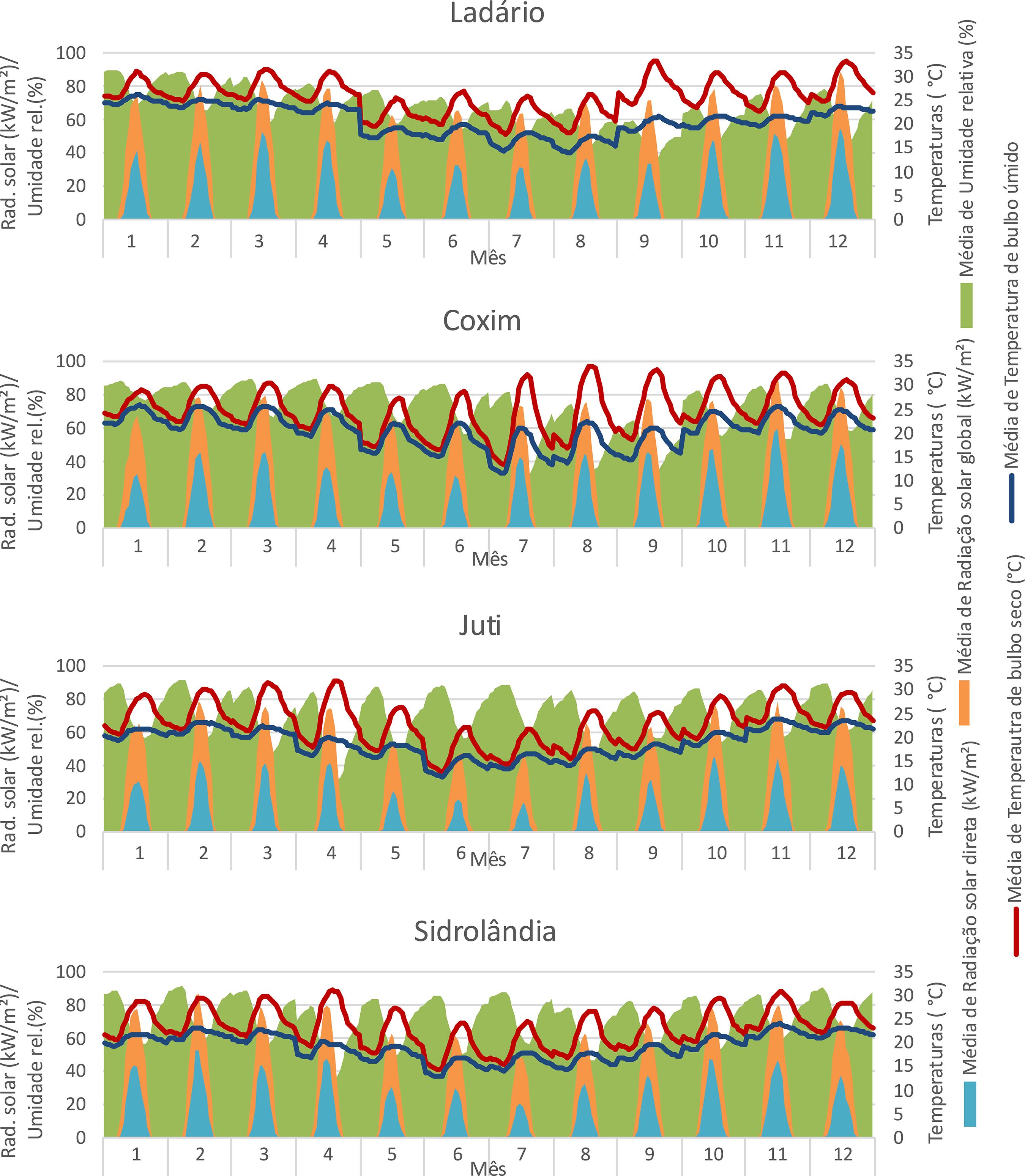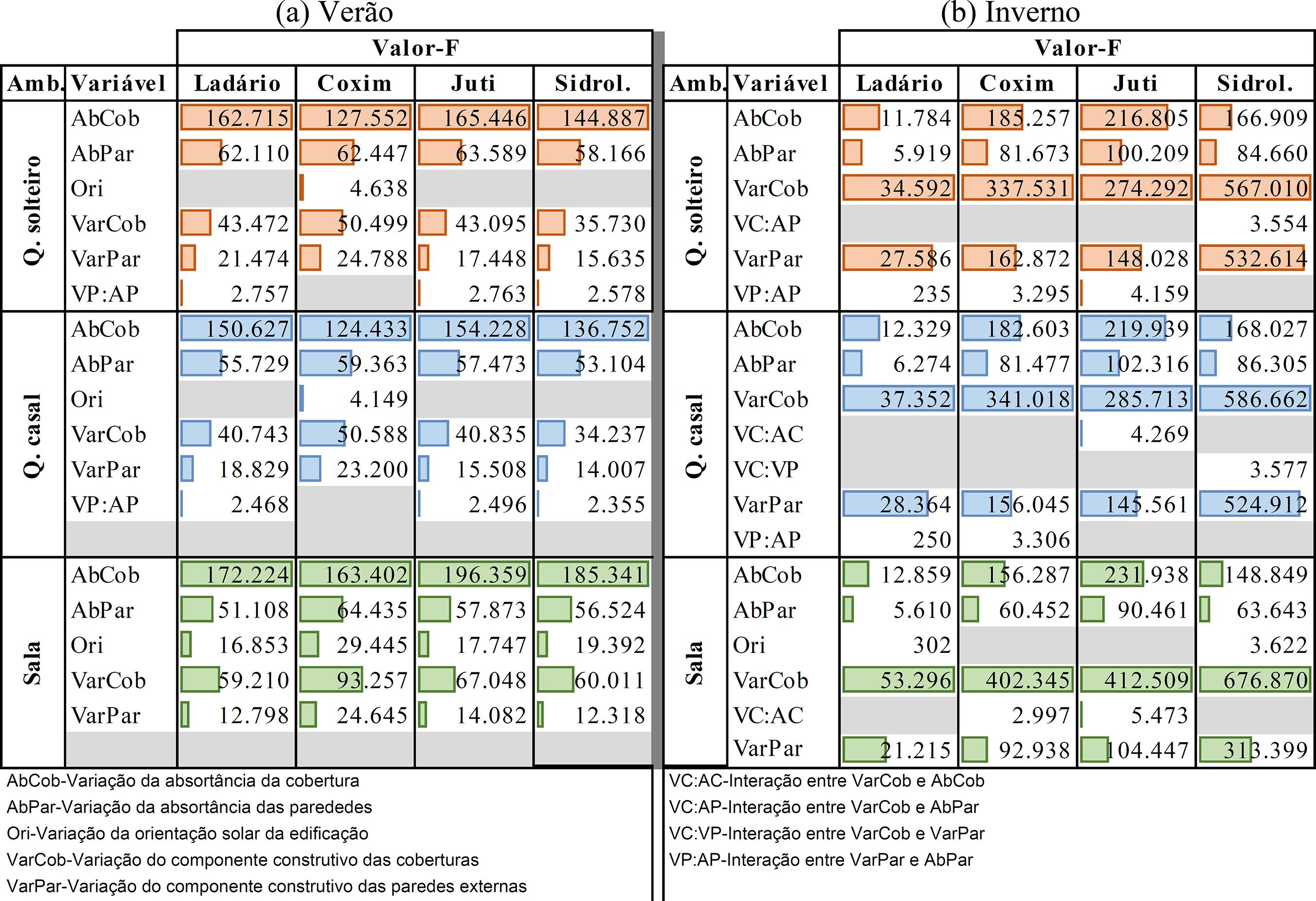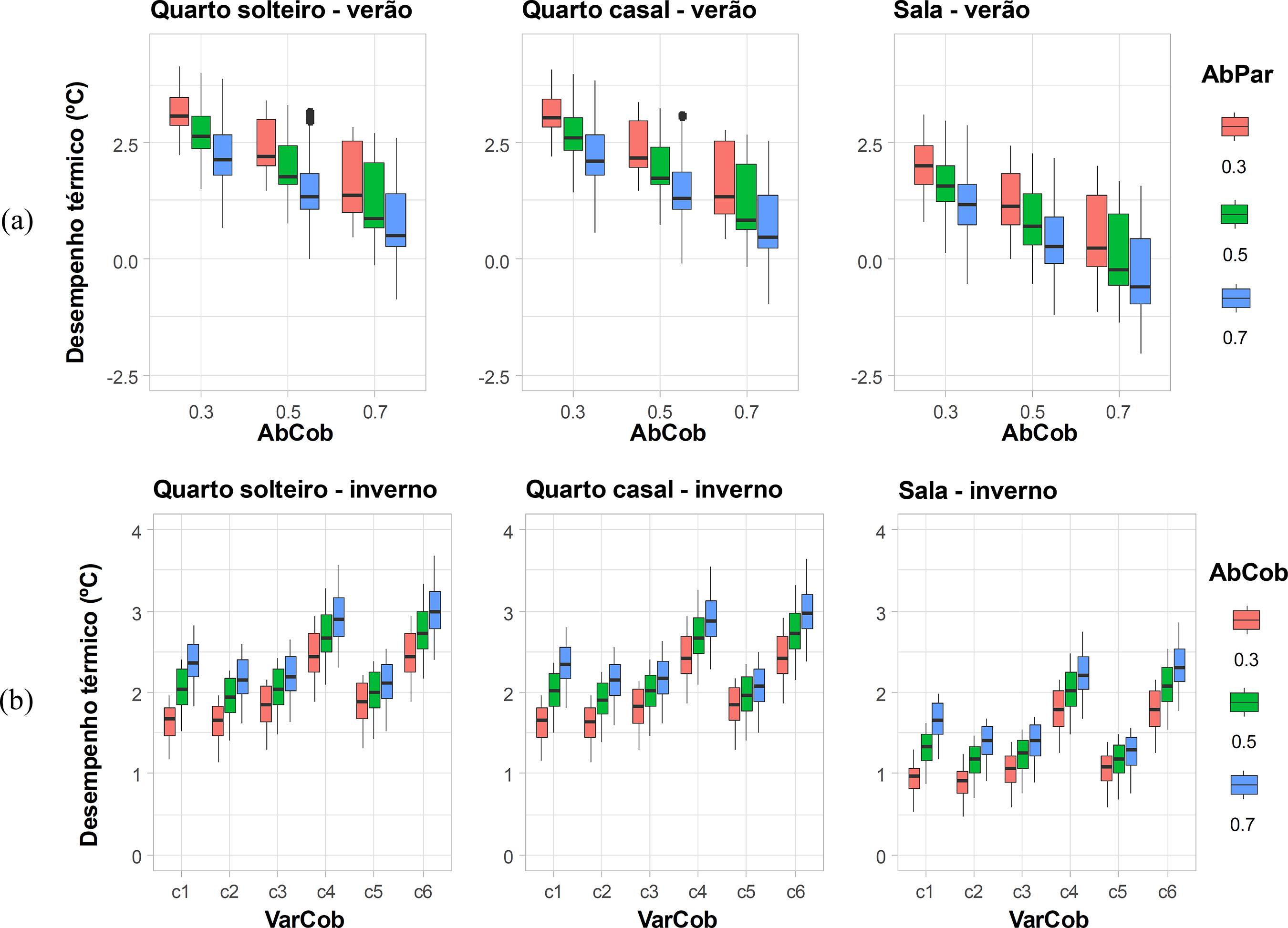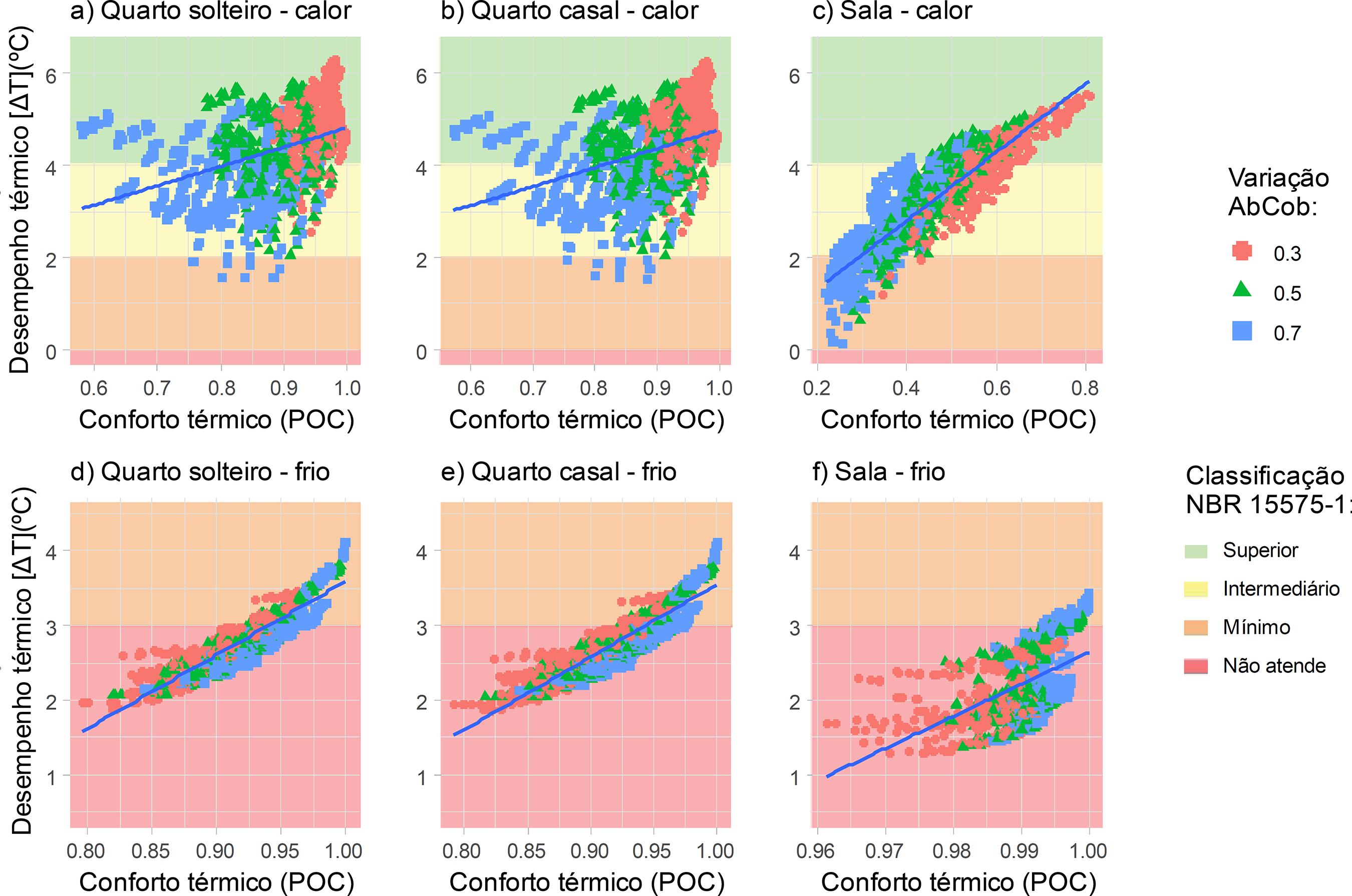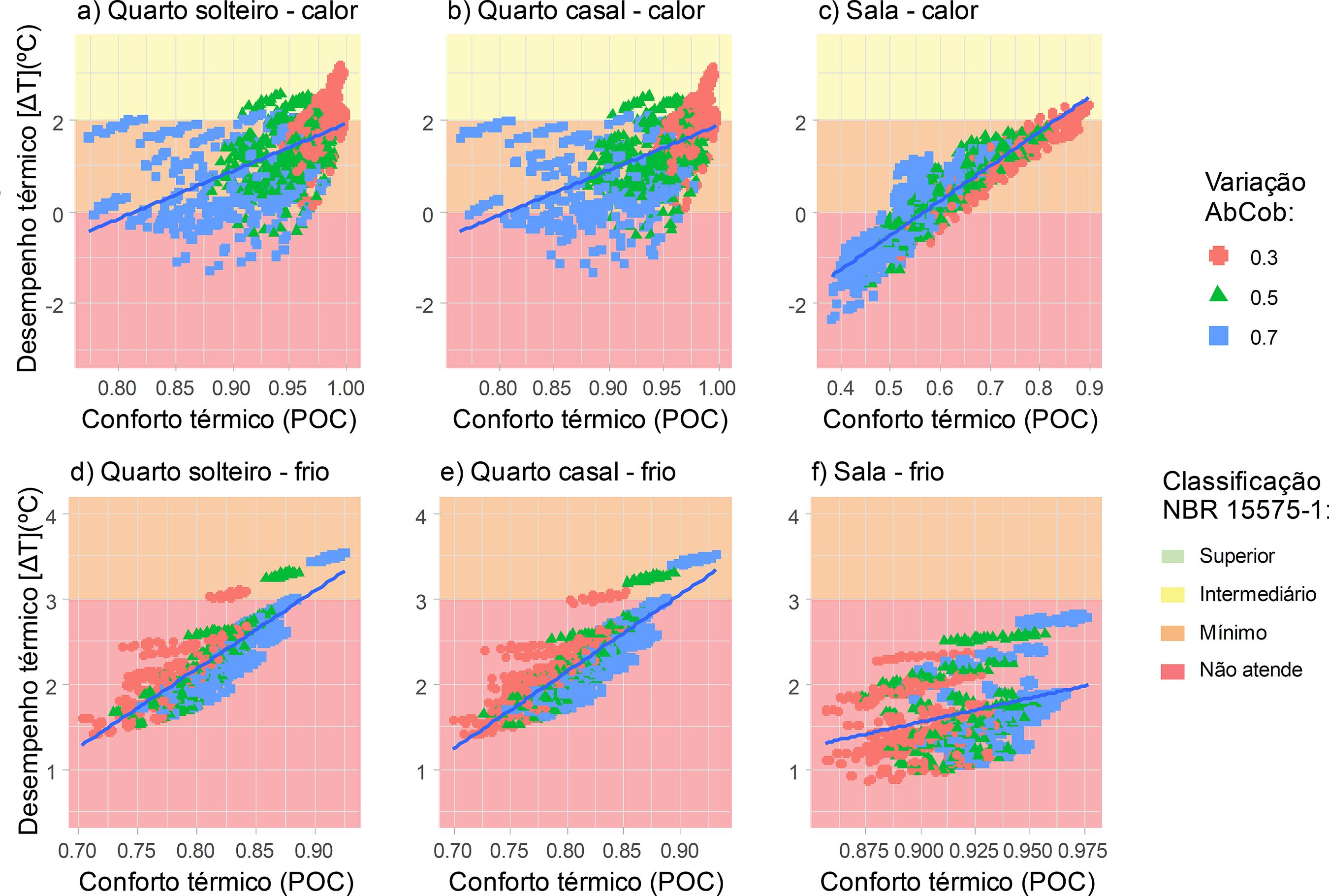Abstract
In Brazil, thermal performance standards for buildings were created to improve the quality of buildings in the country. The NBR 15220-3 was the first technical standard to include the topic of thermal performance, followed by NBR 15575-1, which establishes three methods for that purpose. Building simulation is the most suitable method for evaluating thermal performance, since it analyses the building as a whole object. However, one limitation of the simulation method proposed by the standard is that it does not use thermal comfort indices, but only air temperature differences. The aim of this study is to investigate correlations and divergences of thermal performance, evaluated by the simulation method prescribed by NBR 15575, and adaptive thermal comfort. A social housing project was simulated in different scenarios and with different envelope configurations, using a factorial experiment and, under the same circumstances, a sensitivity analysis of the input variables was performed. The results showed correlation between thermal performance and comfort in some scenarios, which can be explained by the fact that part of the most influential variables in thermal performance were the same as in thermal comfort. However the inefficacy of the normative method is evident with regards to thermal comfort.
Keywords:
Thermal performance; Thermal comfort; Building simulation; Social housing; Sensitivity analysis


